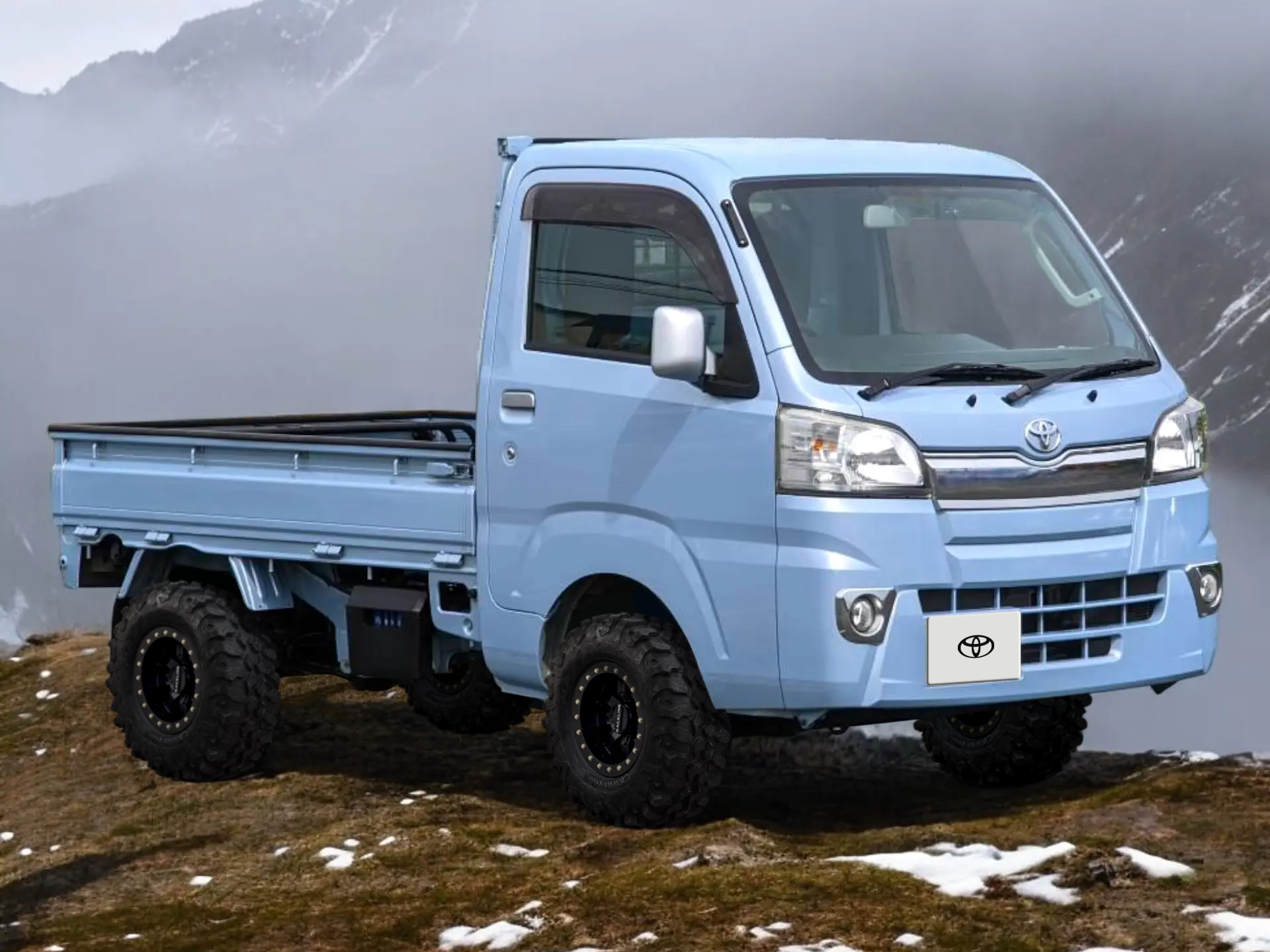Toyota Pixis Mini Trucks
Given Toyota’s scale and global presence, it’s no surprise that the company has also ventured into the mini truck segment. However, in the realm of Japanese mini trucks, Toyota takes a following role rather than a leading one.
Jump To Section
If you take a closer look at Toyota’s Pixis Trucks and Pixis Vans, you may feel a sense of familiarity. You see, these Pixis mini trucks share the same design as others you’ve likely seen before—only with a different badge. And it doesn’t take much digging within the Toyota group structure to uncover the source of these models. As it turns out, they’re built by Daihatsu.
This connection shouldn’t come as a surprise. Toyota had long owned a stake in Daihatsu before completing its full acquisition in August 2016. Daihatsu has been the leader in Japanese mini truck sales for well over a decade, having overtaken Suzuki for the top position. However, within the vast Toyota group, Daihatsu remains a smaller, more specialized division. Instead of developing a Toyota-specific mini truck, leveraging Daihatsu’s expertise and channeling additional sales through a subsidiary by rebranding their models as Toyotas made practical business sense. That’s why, starting in 2011, Toyota began selling rebadged Daihatsu Hijets under its new “Pixis” sub-brand.
When you purchase a Toyota Pixis Truck or Pixis Van, you’re essentially getting a rebadged Daihatsu Hijet Regular Cab or Daihatsu Hijet Cargo, with Toyota badges replacing the Daihatsu ones. This is actually a good thing, as the Hijet series has earned a reputation as a market leader and remains one of the most popular and reliable Japanese mini trucks available.
Model Options
Although the Pixis Truck and Pixis Van are straightforward Daihatsu rebadges, Toyota doesn’t offer the full range of models and options available through Daihatsu’s Hijet lineup. For instance, color choices are more limited—Daihatsu’s Ice Green, for example, isn’t an option. While this won’t be a major drawback for most buyers, as the five available Pixis paint options include the most popular colors, having more variety is always a welcome bonus.
Beyond exterior colors, there are some more significant omissions of features that you can only find on Daihatsu variants. For instance, the higher roofline model of the Daihatsu Hijet regular cab, which adds around three inches of extra interior headroom, is a popular choice particularly among taller US users. Unfortunately, this isn’t available for the Pixis Truck. Similarly, if you’re looking for the extended cab model like the Daihatsu Hijet Jumbo, Toyota doesn’t offer an equivalent. The same goes for the unique crew cab mini truck known as the Daihatsu Hijet Deckvan—Toyota has no rebadged version of this model either. Finally, the popular Daihatsu Hijet Dump models, known for their practicality in off-road and work environments, also have no Toyota counterpart.
This limited lineup almost may give the impression that Toyota views the Pixis series as more of a side project—a way to capture a small share of the mini truck market without leaving it entirely to competitors like Suzuki and their rebadge offerings. For American buyers, there’s no particular reason to seek out a Pixis unless there’s a good one available at the right price. If that’s the case, it’s worth considering, as you’ll know you’re essentially getting a reliable and proven Daihatsu Hijet—just with Toyota badges in a slightly simplified package.

Buying Toyota Pixis Truck Or Van Japanese Mini Trucks
You may find the occasional Toyota Pixis model among the Daihatsu Hijets here at Mini Truck Depot. But if you’re looking for an almost-new or lightly used Japanese mini truck of this model, you’re going to have a lot more choice with the same functionality and quality if you just go for the Daihatsu version, rather than holding out for a Toyota Pixis. See what’s available here.

